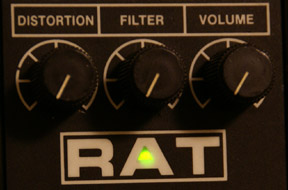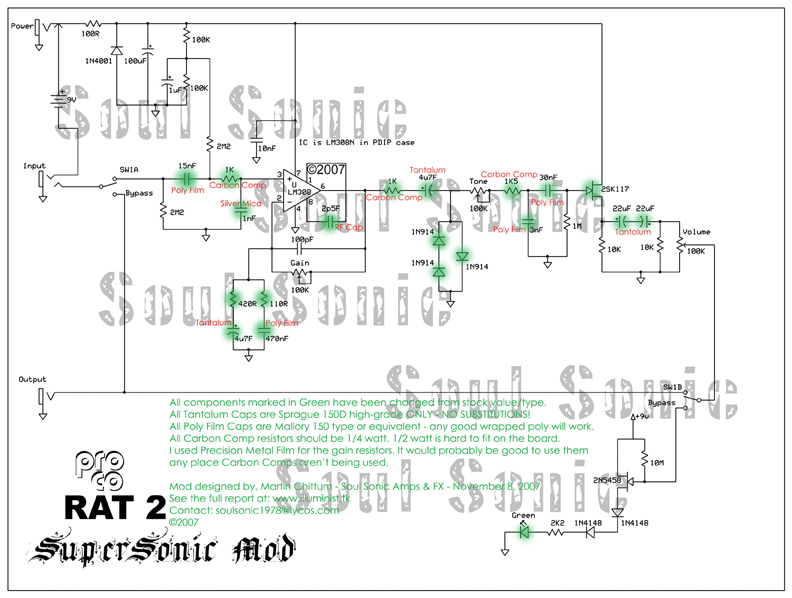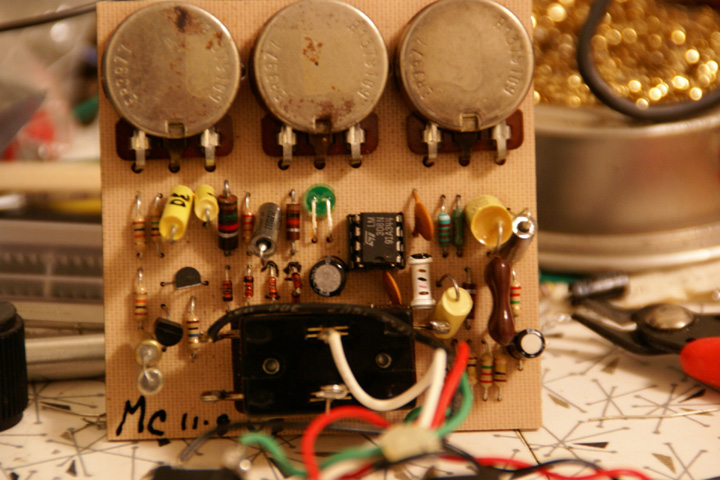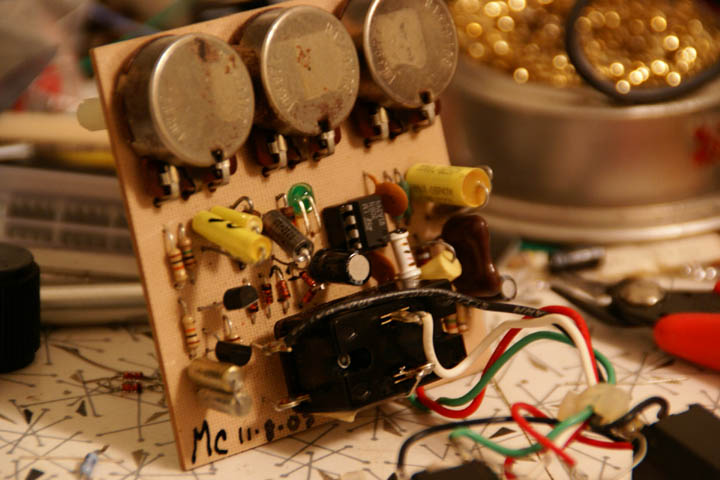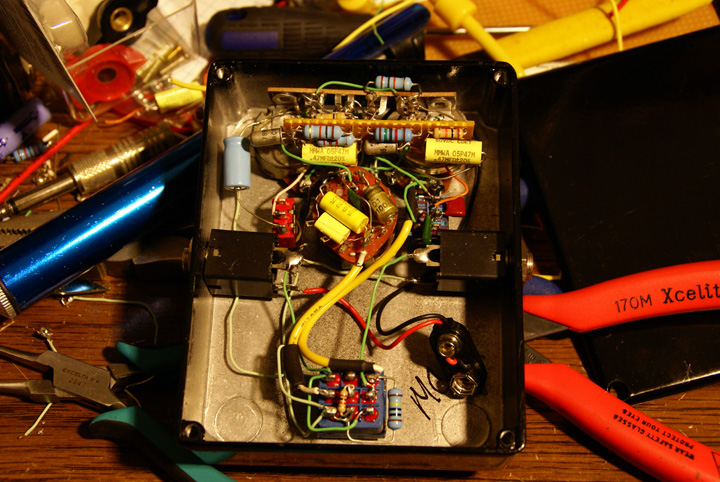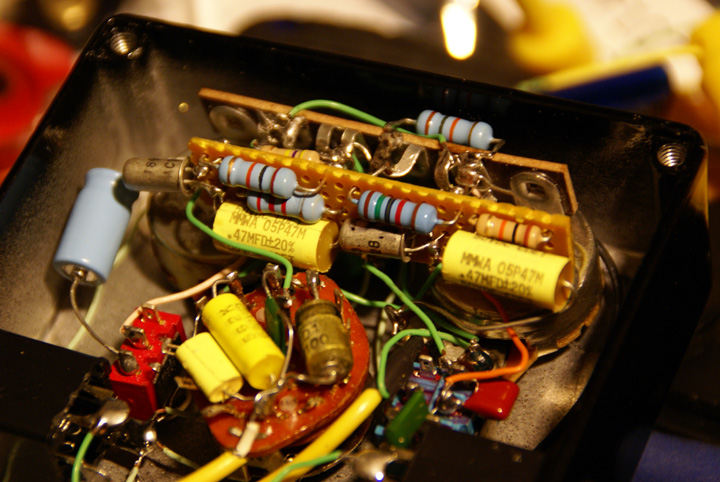Mood:
Now Playing: Nocturnus - The Key
Topic: Klon Centaur
I haven't added anything here in forever. Sorry about that, but I've been focusing all my attention on my Wordpress blog. I'm not going to talk shit about Tripod on my Tripod page, but let's just say there's lots of practical reasons why I prefer to use Wordpress. But since I've noticed that alot of people still visit here via the links in my other blog, I figured it would be a good idea to do a little update here and give folks something to look at other than a bunch of gigantic pics of a ProCo Rat (I'm sure everyone's seen that stuff before anyway).
So, since this is supposed to be my Build blog, what have I been building lately? Here's the most recent; a clone of the Klon Centaur:
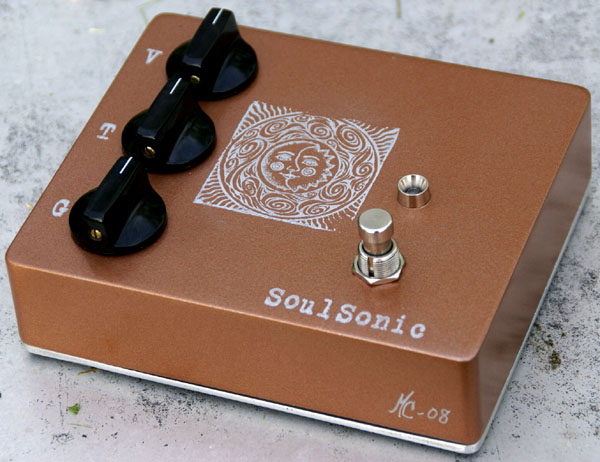
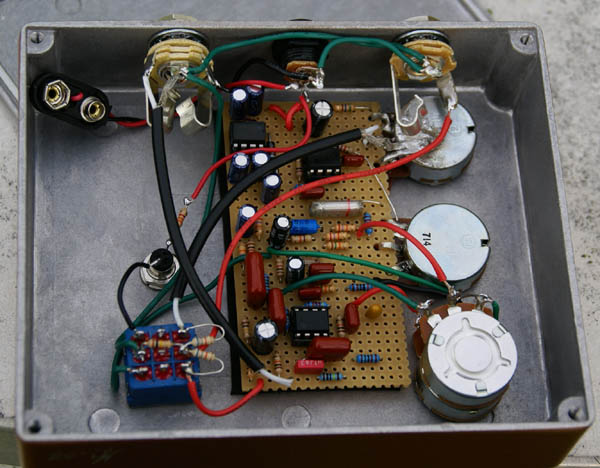
Yup, you might have seen a Klon Klone before, but this one is different - this is the first one built to verify the CORRECT schematic as traced by myself. The old Centaur schematic that had been floating around had many significant errors in it and resulted in a circuit that sounded nothing like the real thing if built. So, to put an end to the mystery once and for all, several members of the Freestompboxes community pooled money together and purchased a Centaur so that it could be de-gooped and traced. The responsibility fell onto my shoulders, and the end results can be seen here:
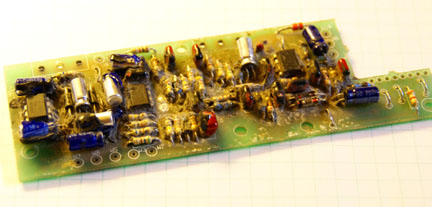
Yeah, it's pretty ugly - I still need to finish cleaning it up and re-assemble it; but at least you can see that I did indeed degoop the whole thing (bottom too, of course) and that the schematic you can find HERE is absolutely correct beyond any shadow of a doubt.
As far as details about my build are concerned; the entire thing was hand-wired on unclad perfboard, using as many of the original spec components as possible. All the small brown caps are made by Panasonic, with a couple oddball ones I threw in there (the bright blue Phillips 6n8F and old mylar 18nF...) because DigiKey was out of stock on those values when I ordered. Several of the brown caps I used are physically larger than the ones in the Klon - without realizing, I had ordered the wrong size, though the values are the same. The original used all Panasonic for the electrolytics as well, but I chose to use Nichicon bipolar caps in the signal path just out of habit (and I'm saving the Panasonic ones I bought for rebuilding the Klon). The pots I used are the usual generic Alphas and they are what they are... cheap, but reliable. The enclosure is a New Sensor 1790, purchased from Pedal Parts Plus (great folks to do business with - highly recommended!).
So, how does it sound? Well, as near as I can tell, exactly like the original. How does the original sound? I think the Klon Centaur is a very good sounding and usable overdrive, but it's not perfect. Of course, perfection is an impossible dream that has driven lesser men to madness, but still, for the amount of trouble and expense you have to go through to get one, I'd expect it would be a bit more versatile. It's not a one-trick pony; more like a two-trick pony! Ha! It does these two things really well: it has a great-sounding clean boost that very few pedals have matched, and it has a thick overdrive that works really well with certain setups and for certain types of music. Basically, that's the problem; if you want a thick heavy rock tone, the Centaur delivers, but if you want anything else you're pretty much out of luck. It doesn't do "smooth" overdrives like alot of it's present-day bootweak cousins, nor does it do a super-saturated shred distortion; but, it does work really well as a tone modifier on top of a good amp tone to push an already-crunchy amp well into the realm of some of these other tones which it cannot produce on its own. The Centaur is a pedal that becomes a part of the amplifier - adding another color to its tonal palette; an extra "more" switch that can turn a clean amp into a crunchy amp or a crunchy amp into a saturated shred amp. The trick is to know how to work the pedal/amp combination to get the desired results. People who have mastered the Centaur, consider it an essential part of their rig and would gladly pay the dear price for it. Whereas, people who are less patient, or less adroit with their equipment (or just plain want a totally different sound!) are unimpressed with the Centaur and don't "get it". Well, I get it, and I really enjoy using it.
-M.C.
P.S.
I apologize for the sloppyness and general unreadability of this blog. Tripod's blog editor SUCKS, and no matter how much I screw around with it, I keep having the pics stuck all over the place in really bad spots that screws up any attempt at formatting. This is one of the main reasons why I hardly ever post here... sorry.

